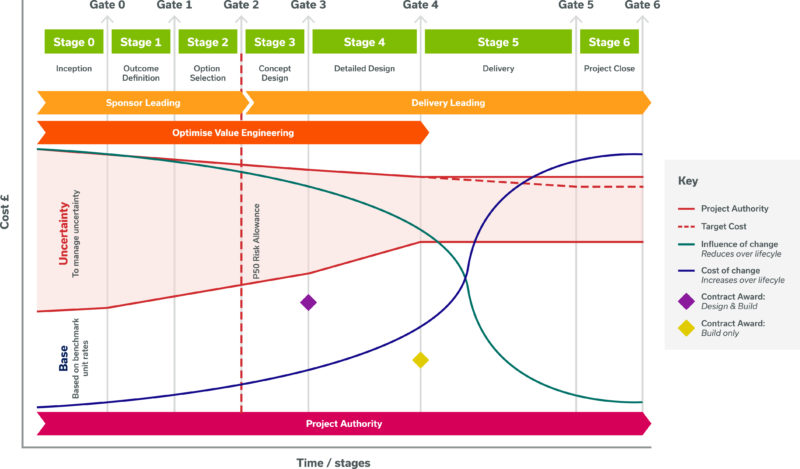Category: Case Study
Value Proposition for Thames Tideway & HS2
As part of several multi-million and multi-billion pound railway and infrastructure projects, here are our insights on how we created a value proposition strategy for our clients, Thames Water, HS2 Ltd and Highways England.
Appointed as the Head of Programme Management Controls, Subash Tavares was tasked with building a value proposition that would work across multiple large-scale projects.
Each project needed its own unique assurance process and, as such, each project has its own name for their own. For example, TfL call theirs their ‘Pathway’, while BAA have named theirs the Capital Projects Handbook and Network Rail have GRIP. To establish such value propositions and assurance processes, the approach had to be taken in seven stages.

Stages one to three all involved processes to optimise value engineering and city planning, and these stages were as follows:
- Stage zero: Inception
- Stage one: Outcome Definition
- Stage two: Option Selection
- Stage three: Concept Design
These were all implemented prior to the contract being awarded, so were absolutely critical to the success and acceptance of the wider projects proposed.
After the four initial stages, the focus for the stages turned to delivery.
- Stage four: Detailed Design
- Stage five: Project Delivery
- Stage six: Project Close
Of course, these stages were the longest of the process, with many other factors for consideration along the way.
To make this framework run as smoothly as possible, the following key considerations were made:
- Establishing a Work Breakdown Structure (WBS)
- Developing an initial and baseline schedule for each project
- The regular review and update of cost estimates, aligned with the project schedule and concurrent gate process
- Accurate recording of all assumptions included in the cost estimates, including the use of data analysis to drive decision making
- Developing a robust risk estimate
- Optimising the entirety of the project with value engineering and cost-effective measures in mind.